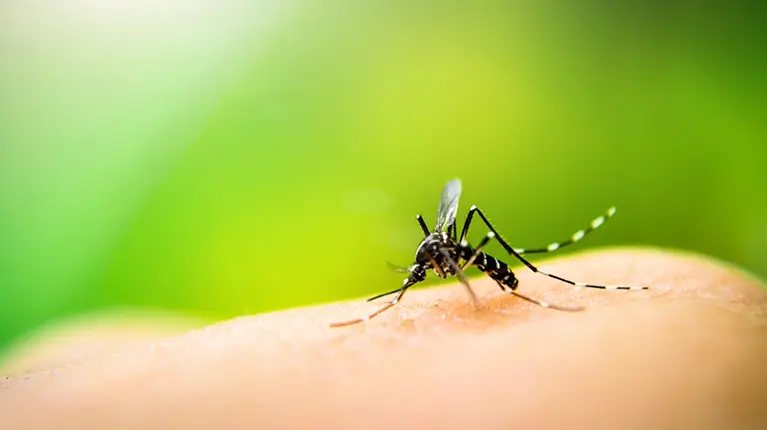Mosquitoes

Mosquitoes are dipterous insects, belonging to the Culicidae family. They are commonly known as “melgas” and can be found all over the place, especially in warmer countries.
Water is an essential factor for its development, whether it is brackish, sweet, clean or polluted. They are also able to grow in holes, in trees, in plants, or in any utensils capable of storing water.
There are more than 3000 species of mosquitoes, described in intensive studies and research that aim to better understand their biology and find the best ways to combat them.
Annoyance and discomfort are not the only inconveniences caused by the presence and activity of mosquitoes. There is a much more serious problem, the fact that mosquitoes are potential vectors for the transmission of numerous diseases, such as filariasis, malaria, dengue, yellow fever, leishmaniasis and encephalitis.
The proliferation capacity and ease of dispersal of mosquitoes are essential and fundamental characteristics for the occurrence of epidemics of these diseases. Thus, and to contain or avoid this situation, investigations and basic research must be carried out, implementing specific programs to combat and eradicate the transmitting species.
MAIN SPECIES OF HEALTH IMPORTANCE:
- Anolephelines – transmitters of human malaria.
- Culicineos – largest subfamily, with 34 genera and about 3000 species.Among these genera, we find the Aedes and the Culexes.
- From the genus Aedes, the species aegypti, albopictus and scapularis are responsible for the transmission of dengue, urban yellow fever, encephalitis and Japanese encephalitis.
- Aedes aegypti is considered the classic vector of dengue and urban yellow fever due to its high endophilia, anthropophilia and susceptibility to the yellow fever virus.
- Among the species of the genus Culex, the species quinquefasciatus is the most important in urban areas. It is commonly known as the “tropical house mosquito” and occurs in abundance in human settlements. It is the main transmitter of bancroftian filariasis (elephantiasis) and viruses that cause encephalitis.
Contact us today for a pest control plan.